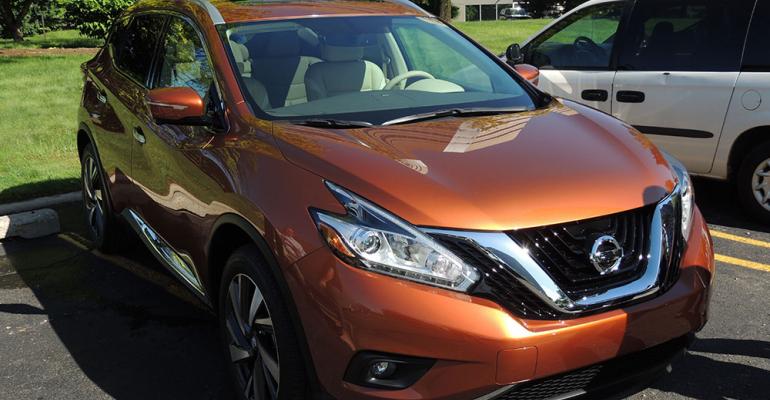SOUTHFIELD, MI – Nissan hopes to return to a design leadership position in the CUV segment with the new, third-generation Murano, debuting in the fourth quarter in the U.S.
While Nissan perhaps played it too safe with the second-generation midsize CUV, engineer Chris Reed wanted to push the envelope as much as possible when development of the third-gen Murano began four years ago.
“We recognize we kind of created the segment and…then we had a great refinement of our second-generation (model),” Reed, overseas chief vehicle engineer-Nissan Technical Center North America, tells WardsAuto here during a recent briefing on the new CUV. “It was really a refinement. We didn’t do anything so dramatic, so (we felt it was) time to reinvent the Murano (and) really push the limit.”
But getting the Murano back to a more daring design wasn’t easy.
When Reed, normally based at Nissan’s Detroit-area technical center in Farmington Hills, MI, was sent to Japan four years ago to work on the third-gen CUV, he became the “guardian” of a design concept based on more complex shapes.
Two possible paths had emerged during development of the 2-row CUV: a more conservative look styled in Japan and the edgier concept from Nissan’s San Diego design studio.
Reed favored the latter look and pushed for it.
“Of course, engineering really liked the (conservative) one, because it was much easier to manufacture and everything was simpler. It was styled in Japan, so (the studio is) right downstairs, it’s easy; (engineers have) got (their) buddies working on it,” he says.
But as an outsider Reed was able to say, “We’ve got to do this.”
He rounded up experts within various specialties at Nissan, including those in aerodynamics, stamping, formability, sheetmetal and exterior parts and lamps, and the group flew to San Diego, where details of how to bring the more aggressive exterior to fruition were hammered out.
“(We did) a few tweaks here and there to make it doable…(and) we came back in support of the model and it got selected,” Reed says.
Difficult at times was going against what computer-assisted engineering showed wouldn’t work.
For instance, CAE predicted the complex shapes in the sheetmetal around the door handles would lead to cracking, splitting and thinning, so Nissan prototyped the components in Farmington Hills to make the design work.
“At the end of the day, we didn’t use so much magic or (many) high-tech, cool processes we could talk about,” he says, adding Nissan did more prototyping of parts than it has in recent history for the new CUV.
“We’re kind of in a mode where we have a very strong digital process and we go to production tooling (with) almost no prototype tooling, usually,” Reed says. “That means you really can’t take a lot of risks. You can’t end up saying you can’t form the body-side panel with a $3 million die that’s already finished.
“The challenge was (because) we have a development process that’s very aggressive, to be able to come to market and you’re trying to do more edgy things, which should maybe be done outside the process,” he says. “But we kind of merged the two together.”
Nissan expects the key buyer of the Murano to remain the same: older, with children no longer living at home. But Reed believes the third-gen model has the ability to capture other groups, too.
“I think we’re going to be able to expand (the base) due to the coolness of the styling,” he says, believing the design should appeal to buyers of the ’02-’07 Murano but not “scare away” those who liked the more conservative second-gen model that debuted in ’09 in the U.S.
Nissan for the first time will build the CUV in the U.S., at its Canton, MS, plant, due to its popularity in the States. First- and second-generation Muranos were assembled in Kyushu, Japan.
The Canton plant will build about 100,000 Muranos annually, Reed says, noting the bulk, 70,000-80,000, will be for the U.S. market and the remainder will be exported to as many as 120 countries.
While Nissan has sold more than 70,000 Muranos per year in the U.S., last year sales tallied 44,684 units, WardsAuto data shows. Sales through May were flat with year-ago, down 0.2% to 17,367.




